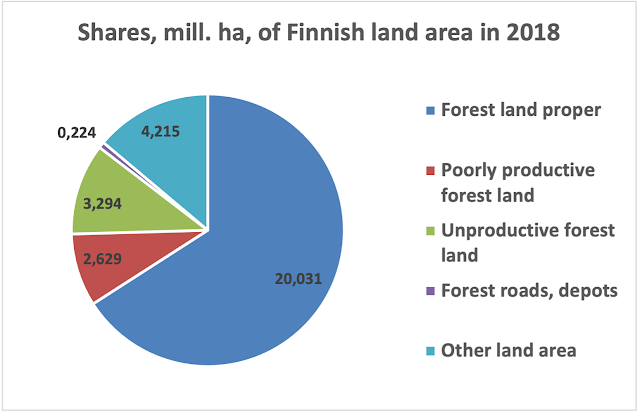Forest Carbon number and Forest Carbon flux in Ethiopia
Forestry in general and carbon husbandry especially, are quite different in the tropical highland country Ethiopia and in the boreal lowland country Finland. When Finland is basically covered everywhere with closed forests, Ethiopia has a mosaic type scenery where closed forests are rare. The densely populated highlands are now basically open agricultural and grazing areas. Modern agroforesty is changing the situation as smallholder farmers are planting trees along the borders of their parcels, and small woodlots for fuelwood and for traditional small house building.
The Picture 1 describes the Ethiopian highland setup. There is an indigenous, original forest in the centre. It has been culturally conserved around a local coptic church (in a Sekela village, in Amhara region). The church area is surrounded by smallholder farmers crop fields with more or less scattered trees planted by the farmers themselves.
Food and Agriculture Organization (FAO) would define the block in the centre of Picture 1 as a Forest because the block belongs to "lands of more than 0.5 hectares, with a tree canopy cover of more than 10 percent, which are not primarily under agricultural or urban land use".
The mosaic type agroforestry areas in the surroundings mostly belong to the definition Other wooded land "with a canopy cover of 5-10 percent of trees able to reach a height of 5 m in situ; or a canopy cover of more than 10 percent when smaller trees, shrubs and bushes are included".
FAO has coordinated the global forest inventories, country by country since the year 1990. As calculated from the FAO database the combined land area for forests and other wooded lands is shown in Figure 2.
 |
| Picture 1 |
In tropical, highly populated, agriculture dominated countries both FAO classified Forests and Other wooded lands are important in Carbon husbandry. As agroforestry methods have been developing considerably after 2000, the relative importance of Other wooded lands in Carbon husbandry is rising.
xxxxx
 |
| Picture 2 |
xxxxx
 |
| Picture 3 |
xxxxx
 |
| Picture 4 |
xxxxx
 |
| Picture 5 |
xxxxx
References:
FAO 2015. Global Forest Resources Assessment 2015. Country files, Ethiopia, (PDF-file)
FAO 2015. Global Forest Resources Assessment 2015. References. (web-link)



Kommentit
Lähetä kommentti